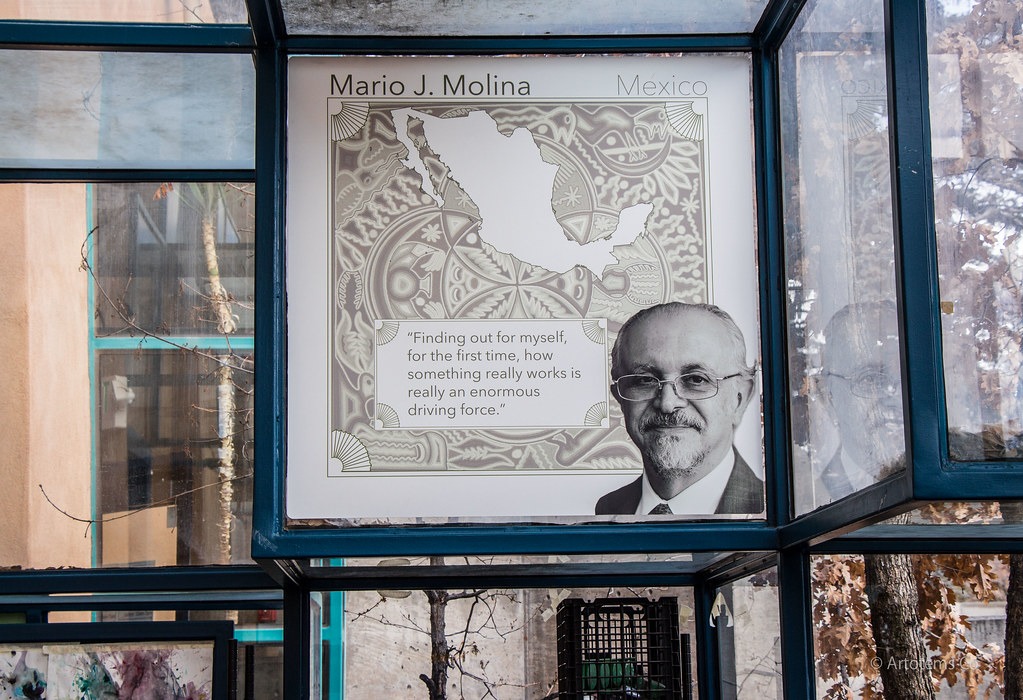Remembering the Legacy of Mario Molina: The Environmental Scientist Who Changed the World
Mario Molina is a Mexican chemist who is widely recognized for his work on the effects of chlorofluorocarbons (CFCs) on the Earth’s ozone layer. He was born in Mexico City on March 19, 1943, and passed away on October 7, 2020. Molina’s scientific contributions and advocacy for environmental protection have earned him numerous awards and accolades, including the Nobel Prize in Chemistry in 1995.

Early Life and Education
Mario Molina was born in Mexico City to Roberto Molina Pasquel, a lawyer and diplomat, and Leonor Henriquez de Molina. He was the youngest of four children and grew up in a well-educated family that valued education and intellectual pursuits. Molina’s parents were both politically active and supported social justice causes, which influenced Molina’s own interest in addressing global environmental issues.
Molina attended the National Autonomous University of Mexico (UNAM) where he earned a bachelor’s degree in chemical engineering in 1965. He then went on to earn a Ph.D. in physical chemistry from the University of California, Berkeley, in 1972. During his time at Berkeley, Molina worked under the guidance of George Pimentel, a renowned chemist, and developed an interest in atmospheric chemistry.
Career and Contributions
After completing his Ph.D., Molina worked as a research scientist at the Jet Propulsion Laboratory at the California Institute of Technology (Caltech) in Pasadena, California. In 1973, he and his colleague F. Sherwood Rowland published a groundbreaking study that showed that CFCs, which were widely used in aerosol sprays, refrigeration, and air conditioning, could break down ozone molecules in the Earth’s atmosphere.
This discovery was significant because the ozone layer protects the Earth from harmful ultraviolet radiation from the sun. Molina and Rowland’s research showed that the depletion of the ozone layer could lead to an increase in skin cancer, cataracts, and other health problems in humans, as well as harm to plant and animal life.
Molina’s research on the effects of CFCs on the ozone layer was met with resistance from some in the chemical industry, who argued that the evidence was inconclusive and that regulations on CFCs would harm the economy. However, Molina continued to advocate for stricter regulations on CFCs and collaborated with policymakers and activists to raise awareness about the issue.
In 1983, Molina left Caltech to work at the Massachusetts Institute of Technology (MIT) where he continued his research on atmospheric chemistry and the effects of pollutants on the environment. He also became more involved in public policy and served as an advisor to the Environmental Protection Agency (EPA) and other government agencies.
Molina’s advocacy and research were instrumental in the passage of the Montreal Protocol in 1987, which called for a phase-out of CFCs and other ozone-depleting substances. The protocol has been widely recognized as one of the most successful international environmental agreements and has helped to restore the ozone layer.
In addition to his work on atmospheric chemistry, Molina also conducted research on air pollution and its effects on human health. He was particularly interested in the health impacts of air pollution in urban areas and advocated for policies to reduce emissions from transportation and industry.
Throughout his career, Molina was recognized for his scientific contributions and advocacy for environmental protection. He received numerous awards and honors, including the Tyler Prize for Environmental Achievement, the United Nations Environment Programme’s Global 500 Award, and the Presidential Medal of Freedom. In 1995, he was awarded the Nobel Prize in Chemistry, along with F. Sherwood Rowland and Paul Crutzen, for their work on atmospheric chemistry and the effects of CFCs on the ozone layer.
Molina continued his work on environmental issues throughout his life, even after retiring from his position at the University of California, San Diego in 2004. He founded and served as the director of the Mario Molina Center for Energy and Environment, a non-profit organization that focuses on promoting sustainable development and environmental protection in Mexico and other developing countries.
Molina was also a strong advocate for science education and public outreach. He believed that it was important to communicate scientific research and findings to the public and policymakers in a way that was accessible and easy to understand. He gave numerous lectures and presentations on environmental issues and worked to promote science education in schools and universities.
Legacy and Impact
Mario Molina’s contributions to atmospheric chemistry and environmental protection have had a lasting impact on the scientific community and society as a whole. His research on the effects of CFCs on the ozone layer helped to raise awareness about the importance of protecting the environment and led to the implementation of policies and regulations to reduce the use of ozone-depleting substances.
Molina’s advocacy and work on environmental issues also inspired many others to take action and make positive changes in their own communities. His commitment to promoting sustainable development and environmental protection in developing countries has helped to improve the lives of millions of people around the world.
Molina’s legacy extends beyond his scientific contributions and advocacy for environmental protection. He was also a mentor and role model to many young scientists and students, and his passion for science and education inspired countless others to pursue careers in science and engineering.
Conclusion
Mario Molina was a brilliant scientist, passionate environmental advocate, and a true humanitarian. His groundbreaking research on atmospheric chemistry and the effects of CFCs on the ozone layer helped to raise awareness about the importance of protecting the environment and led to the implementation of policies and regulations to reduce the use of ozone-depleting substances.
Molina’s advocacy and work on environmental issues have had a lasting impact on the scientific community and society as a whole. He was a mentor and role model to many young scientists and students, and his passion for science and education inspired countless others to pursue careers in science and engineering.
Although he passed away in 2020, Mario Molina’s legacy and impact will continue to be felt for many years to come. His work has inspired and will continue to inspire future generations to take action and make positive changes in their own communities and the world.





